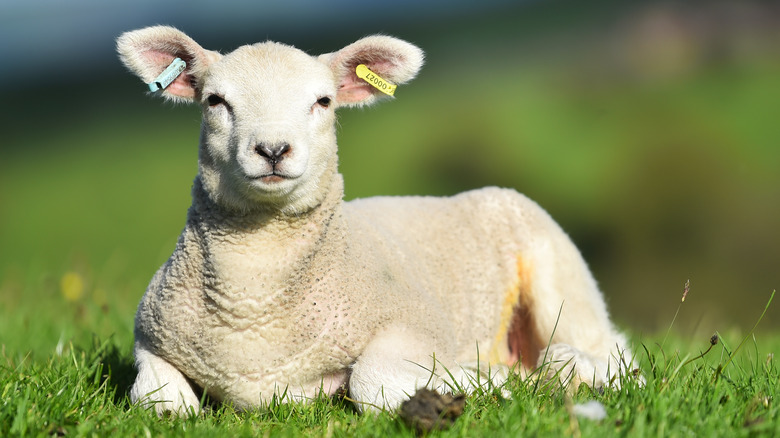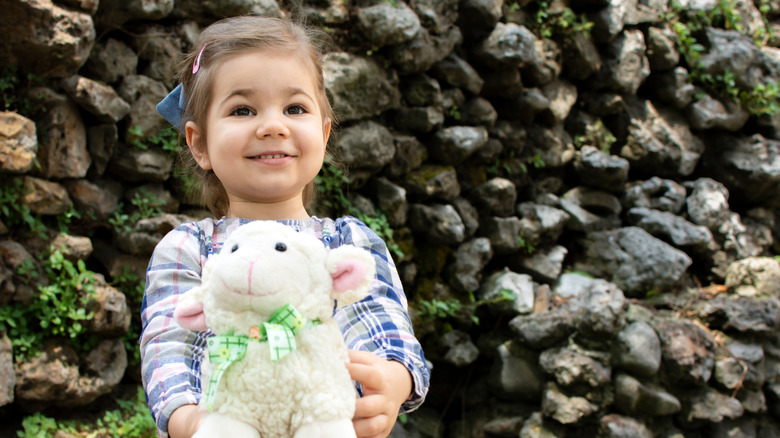The True Story Behind Mary Had A Little Lamb
Many of the nursery rhymes and songs parents and children enjoy together actually have rather dark origins. For example, as BBC News notes, a group of schoolchildren singing "Ring Around The Rosie" (or one of several alternate iterations in English) on the playground may not know that what they're singing is actually an allegory for a deadly 1600s plague. Similarly, "Baa Baa Black Sheep" is about a 13th-century wool tax, and, according to the Fables-Allegories-Fairytales blog, "Jack and Jill" is an allegory about a French king and his wife losing their heads.
However, not all such children's rhymes are dark and sinister in origin. Some appear on the surface to be bits of fun or touching moral lessons, and in fact, that's really what they are; nothing more, nothing less. One example of such a song is "Mary Had a Little Lamb," which is about a real little girl who had a lamb who followed her to school.
There really was a Mary, and she really had a little lamb
The origins of the poem/song "Mary Had a Little Lamb" are disputed but the story that inspired that bit is anything but. As Modern Farmer notes, back in 1815, a 9-year-old Massachusetts girl named Mary Sawyer took pity on a lamb born on her farm. The sickly beast had been abandoned by its mother, and Mary tried valiantly to nurse the animal back to health. Against all odds, it worked, and soon her pet was following her everywhere she went, including to school. Of course, lambs weren't welcome in Massachusetts schools in those days, so Mary tried to smuggle her in, to no avail — the lamb's bleating gave it away. The beast was sent outside, according to Smithsonian Magazine, and sure enough, when school was out, she was still there, waiting for Mary.
The next day, Mary's classmate John Roulstone provided Mary with a poem he'd written about the incident, and the rest, as they say, is history. The lamb grew to be an adult, and had three lambs of her own, before dying in a farm accident. Years later, Mary donated socks made from wool from "the" lamb in a fundraising effort to restore a Boston historical building.

